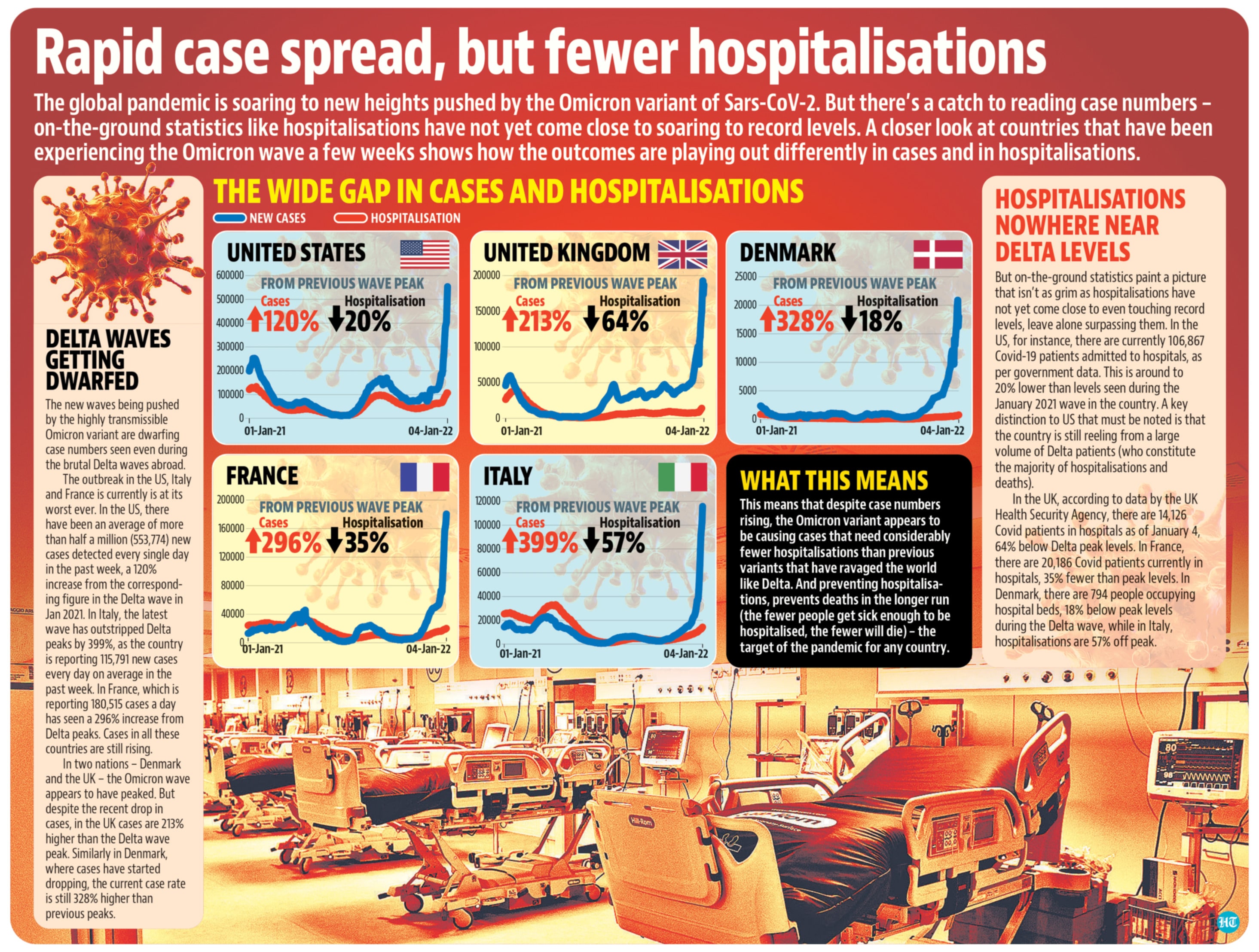There are two distinct views emerging on what comes next after the Omicron waves raging in several countries die down.
One is that the soaring Omicron cases around the globe could increase the risk of a newer, more dangerous variant emerging. “The more Omicron spreads, the more it transmits and the more it replicates, the more likely it is to throw out a new variant. Now, Omicron is lethal, it can cause death … maybe less than Delta, but who’s to say what the next variant might throw out,” WHO senior emergencies officer Catherine Smallwood told AFP in an interview.
The other is that it will hasten the end of the pandemic by leaving a far larger number of people with a baseline immunity that could make future Sars-CoV-2 infections milder, in some ways how Omicron itself is behaving.
Anthony Fauci, the top medical adviser to the US President, said it is technically possible that Omicron could hasten the end of the pandemic, if it proves true that the variant, with its high degree of transmissibility, replaces other strains of the virus that cause more severe infections. “If you have a very transmissible virus that replaces another virus, and [the replacement virus] has less of a degree of severity, that would be a positive outcome,” Fauci told CNBC last week. “But you can never guarantee,” he stressed.
In the last week, two studies have been noteworthy for the insight they give into the coronavirus’s evolution.

The first, by a team led by researchers from University of Amsterdam, paints a picture of how far the coronavirus has evolved, becoming almost distinct from the other four variants.
The researchers assessed this by studying what is known as the antigenic drift of the variants of concern that have arisen till now. Using antibodies from people infected with the ancestral D614G virus, and the Alpha, Beta, Gamma, Delta and Omicron variants of concern (VOC), they created a cartogram.
They found that antibodies in response to infections of the earliest variants – D614G and Alpha — induced the broadest immunity, while individuals infected with other VOCs had more strain-specific responses. Mapped on the cartogram, this showed that the four VOCs clustered together.
The Omicron variant, however, was much farther away on the diagram as it was substantially resistant to antibodies from all other variants. Only antibodies caused by Omicron infections appeared to neutralise it well.
The researchers use the seasonal flu as a comparison for what this means. Seasonal flu viruses, too, keep evolving – at times, mutating to become deadlier, like they did in 2015 and 2018. The flu viruses, which includes some like H1N1 that were a cause for global concern when they first arose, is endemic partly due to vaccines that are updated every year.
This may now be the case with the coronavirus, and Omicron’s arrival represents the point at which vaccines must now be updated. “Antigenic cartography revealed that all VOCs preceding Omicron belong to one antigenic cluster, while Omicron forms a new antigenic cluster associated with immune escape and likely requiring vaccine updates to ensure vaccine effectiveness,” the study says.
The second study finds that the Omicron variant has sharpened a trait that will allow it to infect more species, thereby expanding evolutionary opportunities.
The team, led by researchers from Imperial College London’s department of Infectious Disease, found that the Omicron variant’s highly mutated spike protein “mediates enhanced entry into cells expressing several different animal ACE2s”.
In other words, they found that the variant was more able to enter cells using the ACE2 proteins from several species not used efficiently by other Sars-CoV-2 variants. Omicron can now potentially infect domestic poultry, horseshoe bats, and mice, the researchers said.
This means the virus has higher zoonosis potential – the ability to jump between species.
As a result, there is now a “possibility that the host range of Omicron may be widened even further giving it the potential for reverse zoonosis (jumping to humans back from animals) and the establishment of novel wild or domestic animal reservoirs from which future Sars-CoV-2 variants or recombinants might emerge”.
In other words, the virus can continue evolving in any of the more animals it infects and jump back to humans – with what traits, that only time will tell.
Stay connected with us on social media platform for instant update click here to join our Twitter, & Facebook
We are now on Telegram. Click here to join our channel (@TechiUpdate) and stay updated with the latest Technology headlines.
For all the latest Health News Click Here
For the latest news and updates, follow us on Google News.

